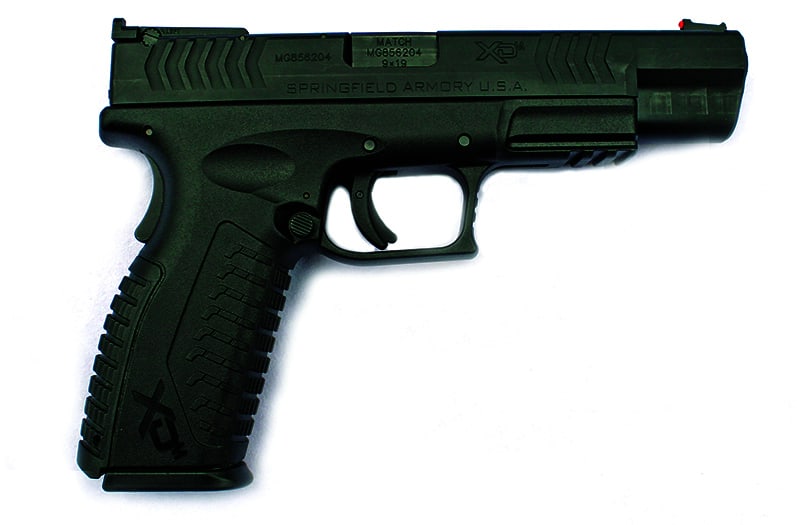“High Caps” & Handicaps
Physically-challenged gun owners are perhaps more cruelly “handicapped” by magazine capacity limits than anyone else. Here are some of the widely overlooked reasons why.
The history of anti-gun politicians practicing Band-Aid therapy for cancer by passing magazine capacity limits—and ignoring the terrible side effects—goes back more than a score of years. While most gunfights don’t require the defender to fire more than 10 rounds, some do. In recent years, LAPD has seen about 5 percent of their shootings go over 16 rounds per officer, and NYPD, 3 percent.
Those which exceed 10 rounds are, of course, greater in number. Consider that some of those cops were backed up by other officers also shooting. Most armed-citizen cases involve a lone defender. And remember, the bad guys the cops have to shoot it out with, from New York City to Los Angeles, are the very same bad guys the citizens arm themselves against.
And now, imagine you’re in that high-volume firefight on the end of the bell curve, have to reload a low capacity gun… and you’re handicapped to boot.
Run … Hide … Fight?
The current protocol suggested by authorities for innocent victims present when a mass-murderer opens fire is the continuum of “Run, Hide, Fight.” Run away, and since you can’t outrun a bullet, hope the killer targets some other poor, helpless SOB instead of you. Hide, hopefully where he can’t find and murder you, or behind something so solid he can’t come through it after you, or shoot you through it. Only after that, they suggest, should you fight.
Well, guess what. When you’re in a wheelchair, when you can’t move quickly, “Run” and “Hide” are off the table from the first moment the threat explodes upon you. The “Fight” element is all you’ve got left, and it’s not even an option anymore, it’s your only resort.
Less Visible Disabilities
Obviously, the guy in the wheelchair ain’t runnin’ or hidin’ no place. Less obvious is the fact that for every chair-bound disability sufferer, there are many more people with bad knees, bad ankles, bad feet, bad hips, etc., who simply can’t run. They can’t outpace the mad slasher chasing them with a knife and can’t get to cover from opposing gunfire before a bullet finds them. When they do get to cover, they’ll have a hell of a hard time kneeling behind the engine block or whatever, and a harder time getting up and moving to a better position if they’re outflanked.
Chair or cane or walker, or maybe ambulatory but inflexible and/or slow, these potential murder victims have only one chance to survive and to protect others if they’re the only one with a gun. That chance is, shoot back until the threat is neutralized. Marksmanship degradation under stress and fast movement or skillful use of cover by bad guys may require a lot of bullets for the guardian—whether he or she was appointed by a government or by fate—to get the situation under control. The bad guy may be wearing body armor (North Hollywood, Aurora), which soaks up several bullets before the good guy can realize it’s time to go to Plan B for a head or pelvis shot.
Drugs, pain-deadening alcohol, psychosis or rage can turn the attacker into a “bullet sponge” who won’t stop his murder attempt until he has been shot many times. Limit the rescuer to 7 shots in his or her gun as in the original New York SAFE Act, or 10 as in California, Connecticut, Hawaii, Maryland and several other jurisdictions, and we have the fatal pause of the reload for any good guy, but particularly the handicapped one who couldn’t move out of the line of fire or reach—and take—cover. You’ve doomed him to be caught in the open, helpless, for several seconds while reloading under fire. It’s like telling one boxer to lower his arms and stand for a few seconds to be a punching bag for his opponent.
What of the 1-armed shooter? Beyond the obvious amputee, you have any of the rest of us who has an arm in a sling from an ordinary accident, or takes a wound in an upper limb early in the fight. The 1-handed reload can be done, but it takes significantly longer. During each extra second, his opponent can be firing 4 or 5 shots. If the good guy doesn’t have to reload, his window to the next shot that could save his innocent life is only a 0.20- to a 0.25-second.
Given that mass-murderers bring multiple guns to their death orgies more often than not, and by definition don’t obey “magazine capacity limits” or other laws anyway, such “limit laws” are useless except for serving purposes of political agendas. They only limit the ability of the law-abiding to defend the innocent.
And such ill-conceived, poorly-researched laws have their cruelest, most disparate negative impact on the physically disabled members of society.

Sign up for the Personal Defense newsletter here:





